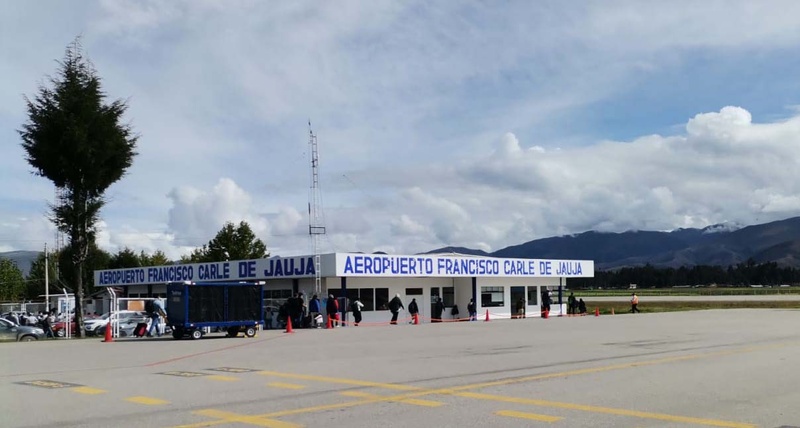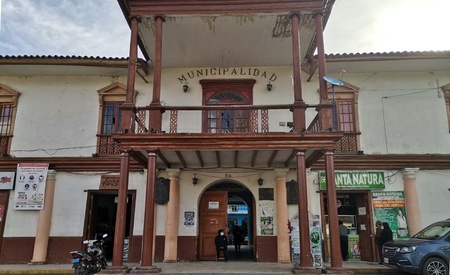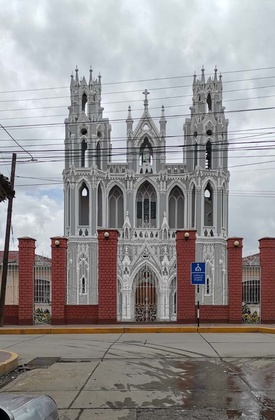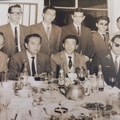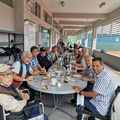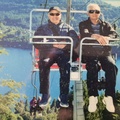Wednesday, March 23, 2022. For the first time I arrived to Jauja by plane from the city of Lima, the travel time was only 35 minutes and we did not feel the famous soroche or the body discomfort that is felt when traveling by land . My group was five people. Three ladies and two gentlemen. All elderly people.
Mr. Alejandro Nakao and his wife Ana Minami, Mrs. Paulina Goya, Bertha Matzumoto and me. We arrived at the Francisco Carlé airport in the city of Jauja. First time I landed on its runway and, excited, I remembered that I was one of the many students who came to its inauguration in 1953. Flag in hand, we shook our emotions when the piloted TAM plane appeared in the blue sky dotted with clouds. by Mr. Aliaga, who was the uncle of a student in my classroom at Colegio San José. Only 69 years had passed since the inauguration of said airport.
I never thought I would reach Jauja by that route. I always did it with my car since the eighties and before that with the buses that left Lima. Seven years ago, Samuel Matsuda, Víctor Ykeda, Juan Kanashiro and I embarked in my car. We arrived in La Oroya in five hours and two hours later Jauja was waiting for us.
In 1999, I had arrived in Jauja in my car accompanied by Luis Maeshiro, Katzuo Asato and Jorge Yano. We arrived at La Oroya in three hours and two hours later we arrived at Jauja.
Today the traffic on the Central Highway is a long line of trailers, trucks, buses and cars that make a prompt arrival to the City of La Oroya almost impossible, a key place for those going to Jauja, Concepción and Huancayo; those who take the route to Tarma, La Merced, San Ramón, Oxapampa; or those that go to Cerro de Pasco, Huánuco and Tingo María.
Mrs. Bertha Matsumoto, my aunt, suggested that I travel by plane, and we did it with the penalty of leaving my car and making the stay with rented vehicles in Jauja and its surroundings. But everything turned out okay. These last seven years, Jauja has progressed commercially, my neighborhood Huarancayo, where the train station is located and the place where Uncle Benito had his chalet. Today it represents the busiest commercial area and, being close to the airport, arrival is very easy.
I just miss the loud whistle of the Peruvian Central Railway. And I remember that in the fifties the passenger train, the freight train and several wagons that traveled the route from La Oroya, Jauja and Huancayo arrived daily in Jauja. Other times without a doubt. But isn't it true that trains everywhere in the world are accelerating the development of countries? And bringing with it progress, security and taking care of the environment.
Today, as I approached the abandoned train station, my memories turned into nostalgia. How was it possible that the rails of sublime travel ended up dirty and forgotten. Simply abandonment has ended the hope, development and future of a country.
Jauja has changed since the sixties when I, at 20 years old, and on the night trip to the South American, took out my handkerchief and hid my tears. Today, the Ricardo Palma Restaurant, the Inka Kola beverage bottling plant and Uncle Benito's Chalet do not exist, to give an example. The Colonial Cinema, the “Talavera de la Reyna” Bullring and many places from my time have disappeared. Development is the new progress of a city piloted by its new generations.
But Jauja will be in the story of my life. That place in my memory, my vision and my memories, the same refuge of my childhood and youth. And I will return as many times as I can to get and find a friend along the way, or a tombstone with the name of my remembered companions. School 501, the San José School, the Nisei Jauja Club, the Fire Company, the green kiosks in the Main Plaza of Mr. Pánfilo Cáceres, the roundabout, the three chalets in front of the train station, the Los Andes Club premises of the Japanese Colony in Jirón Grau, next to Mr. Nobuo Taniguchi's watch shop. The Junín football stadium... or simply take my steps, with some roses in my hands and find between the sun and the rain, between the joy and the celebrations, between the days already lived and the years that are gone, the eternal place of a colorful cemetery with tombstones at the right moment to live a good memory.
The visit with my friends who arrived from Lima was the joy painted on their faces. We got off the plane as if we were in the capital and we had a good time in good health and without any discomfort. Arriving at the Paca lagoon on a sunny afternoon and sailing through its waters singing the huayno “Jauja” by my friend Juan Bolívar was to remember passages from my childhood and youth.
The next day, we went to see the cemetery for my friends, and the first place in the cemetery was the niche of Mrs. Amelia Nakagawa. She died on May 20, 1947, remembered by her husband and children. Marcos Toshi Nakagawa Ito's mother, whom I affectionately call “My brother” with whom we lived together in the house of Mr. Benito Araki and his wife Maximina Miyada for eight years, from 1948 to 1956. Today, Toshi lives in the city from Orlando, Florida, in the United States.
My next visit was Mr. Jinso Takauchi's niche. He died on February 28, 1955. I was about to turn 15 and it was the loss of my “grandfather” in life; Ojisan Jinso, every time Aunt Maximina voted for me because I was the most spoiled of the Nisei at that time in Jauja. Jinso san, when my aunt went home to rest in the afternoons, she would make me go to the restaurant and I would eat until I was full with roasted milk and everything. Some time later, if he got sick, I would go with the porter bringing him food, and I would always find him in his bed knitting stockings. Since he had a relative in Lima, that relative sent him boxes of toys that were imported from Japan. Takeuchi san, as they called him, let me play with these toys that were based on ropes and, when he gave him too many, they would break. They were the first cheap toys Made In Japan. They are the two people with whom whenever I arrive at the Jauja Cemetery I begin my visit.
An hour later, we left for the town of Ingenio, the trout farm in the city of Concepción. Lunch and the afternoon were a walk to the favorite place of my trips to the city of Jauja. Tennis friends on previous trips and this time with seniors.
The third day, my friends traveled to the city of Huancayo, while I continued visiting the niches in the cemetery and taking photos of their tombstones. I finished my work on Saturday at noon, after lunch at the Paraíso Restaurant, we arrived at the hotel and headed to the airport. Four thirty in the afternoon the LAN plane landed from Lima, and 40 minutes later, it left back to the capital.
The five elderly people arrived in Lima without any problem. Good health and everyone happy and happy with the visit to the historic city of Jauja. The return flight only lasted 35 minutes and everyone did not feel altitude sickness. My next visit to Jauja will be by plane again.
Thank you very much, friends Anita, Paulina and Bertha; and my friend Alejandro. It was a trip that at our age we did not think we would spend in very good health. Until next time, friends. Jauja awaits us with its small and safe airport, and its places that have the charm of a serene lagoon, beautiful landscapes and the tranquility and beauty of the towns of our mountains.
© 2022 Luis Iguchi Iguchi


